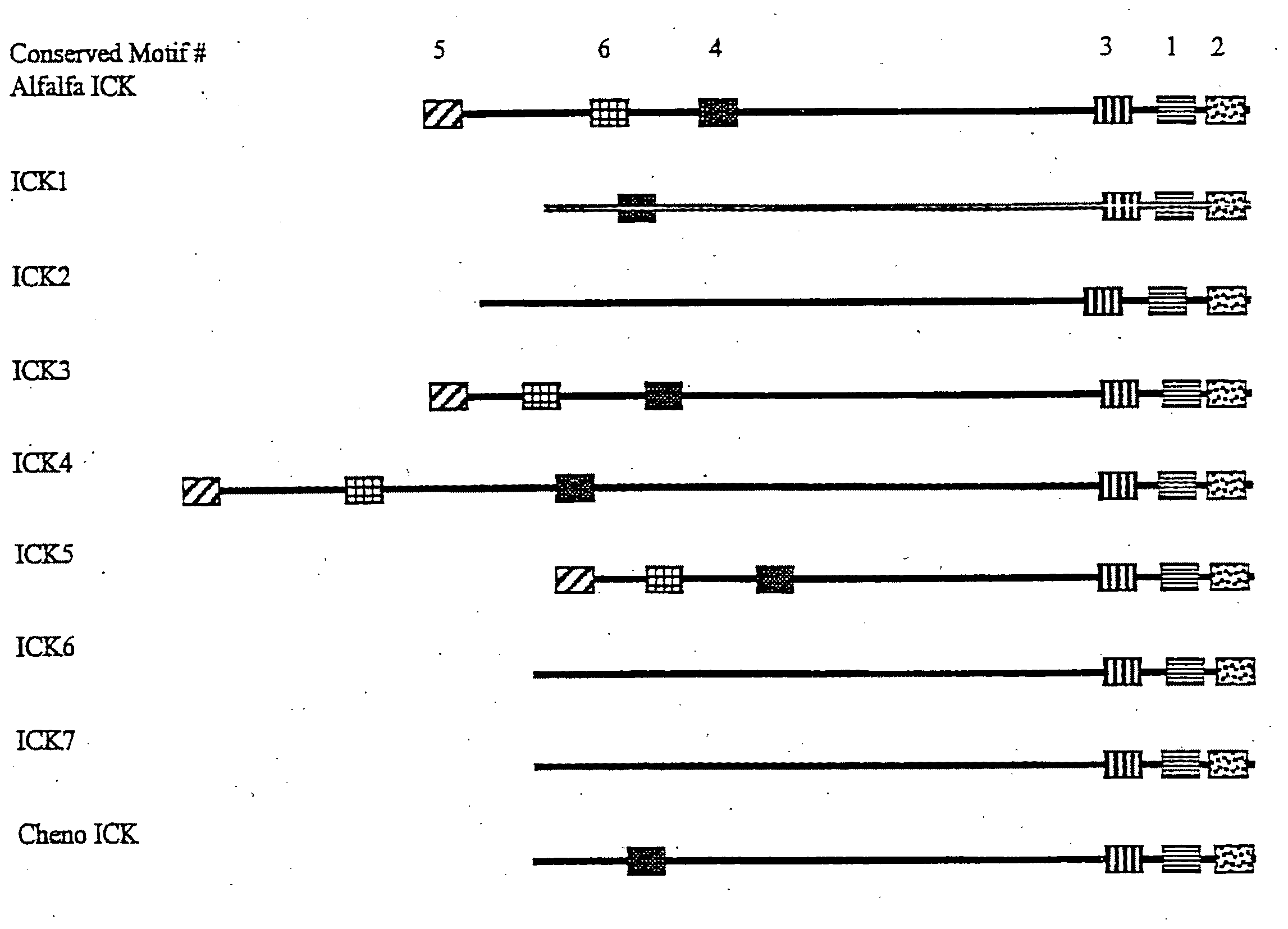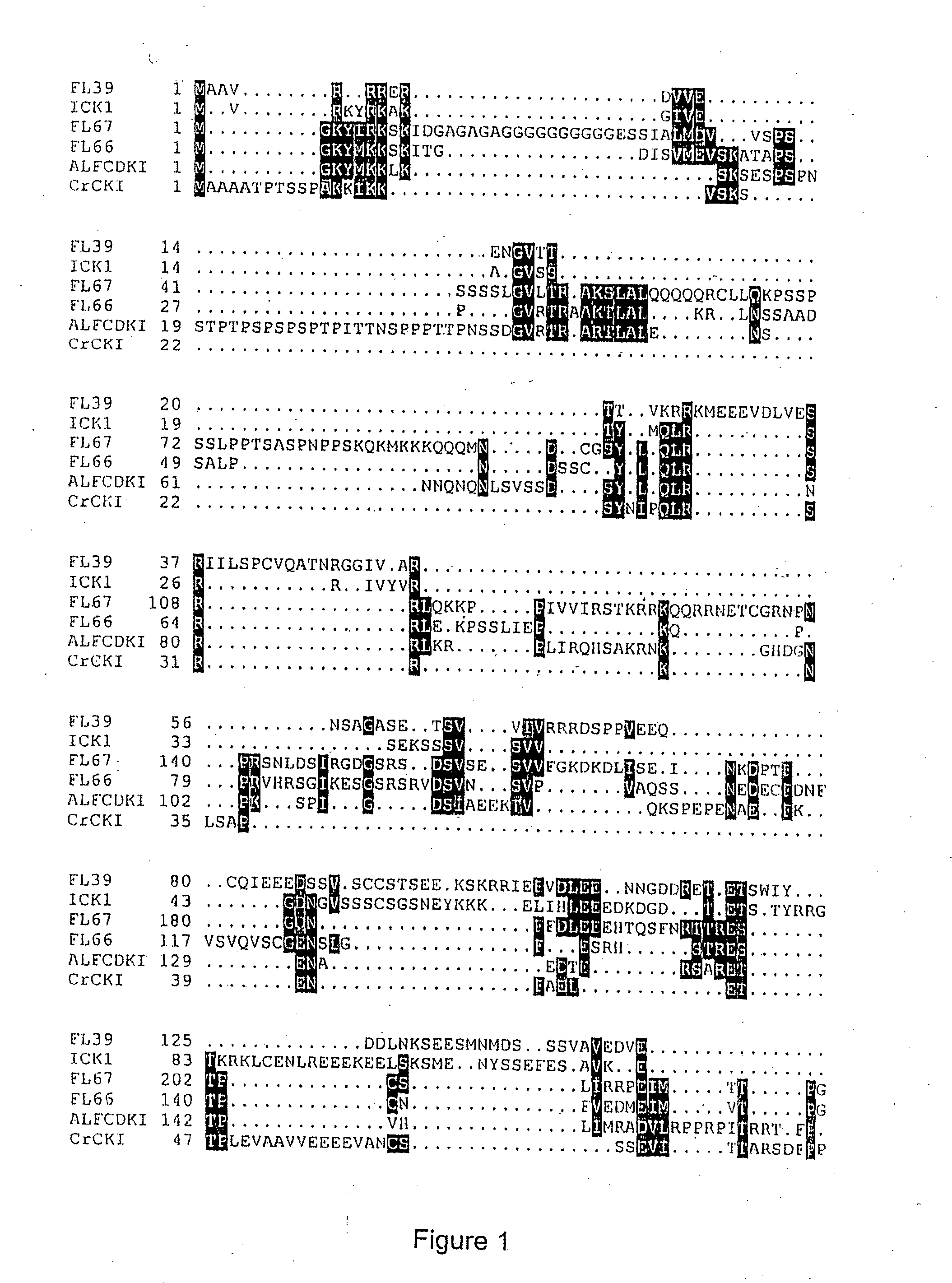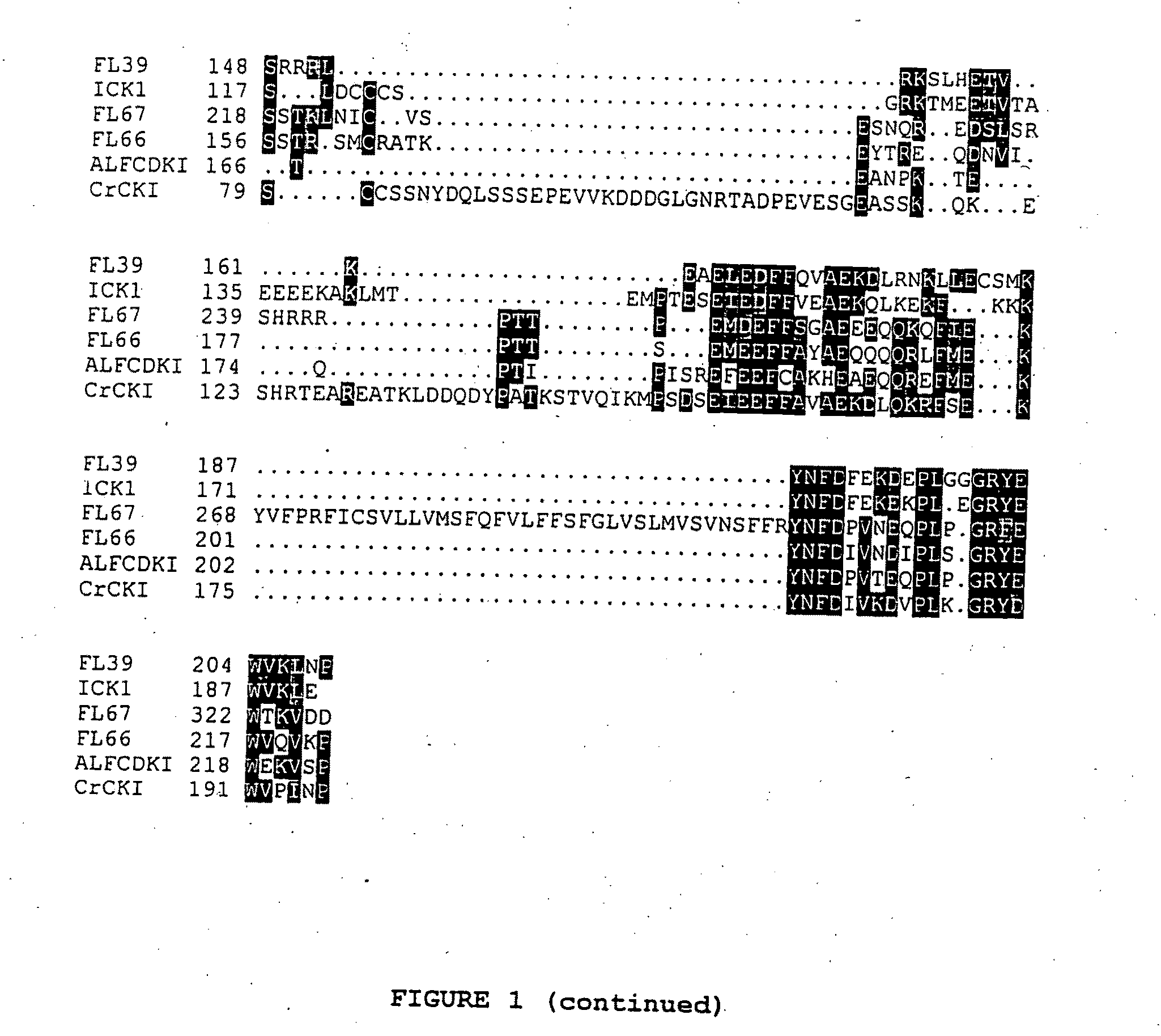Cyclin-dependent kinase inhibitors and uses thereof
a kinase inhibitor and cyclin-dependent technology, applied in the direction of plant growth regulators, biocide, angiosperm/flowering plants, etc., can solve the problems of affecting complex situation, and potential damage to dna, so as to improve the growth rate and structure of plants. , the effect of influencing the growth of plants as a whol
- Summary
- Abstract
- Description
- Claims
- Application Information
AI Technical Summary
Benefits of technology
Problems solved by technology
Method used
Image
Examples
example 1
Identification of Putative Cyclin-Dependent Kinase Inhibitors
[0250]For the identification of CKIs a two hybrid system based on GAL4 recognition sites to regulate the expression of both his3 and lacZ reporter genes was used to identify CDC2aAt-interacting of proteins. The bait used for the two-hybrid screening was constructed by inserting the CDC2aAt coding region into the pGBT9 vector (Clontech). The insert was created by PCR using the CDC2aAt cDNA as template. Primers were designed to incorporate EcoRI restriction enzyme sites. The primers used were 5′-CGAGATCTGAATTCATGGATCAGTA-3′ (SEQ ID NO: 7) and 5′-CGAGATCTGMTTCCTAAGGCATGCC-3′ (SEQ ID NO: 8). The PCR fragment was cut with EcoRI and cloned into the EcoRI site of pGBT9, resulting in the pGBTCDC2A plasmid. For the screening a GAL4 activation domain cDNA fusion library was used constructed from Arabidopsis thaliana cell suspension cultures. This library was constructed using RNA isolated from cells harvested at 20 hours, 3, 7 and 1...
example 2
LDV66, LDV39 and LDV159 bind CDC2aAt, not CDC2bAt
[0253]The pGBTCDC2B vector encoding a fusion protein between the C-terminus of the GAL4 DNA-binding domain and CDC2bAt was constructed by cloning the full length coding region of CDC2bAt into the pGBT9 vector. pGBTCDC2B was transformed with pGADLDV66 / pGADLDV39 / pGADLDV159 in the HF7c yeast and cotransformants were plated on medium with or without histidine. As control, pGBTCDC2A was transformed with pGADLDV66 / pGADLDV39 / pGADLDV159. In contrast to the transformants containing the pGBTCDC2A vector were cotransformants containing the pGBTCDC2B vector unable to grow in the absence of histidine. This demonstrates that the LDV66, LDV39, LDV159 proteins associate with CDC2aAt but not with CDC2bAt.
example 3
Isolation of FL39 and FL66 Sequences
[0254]Since the LDV39 and LDV66 clones encode partial proteins, lacking their amino-terminal part, a flower cDNA library obtained from the ABRC stock centre (library stock number CD4-6) was screened. In total 50.000 plaque forming units were hybridised using a fluorescein-labelled LDV39 or LDV66 probe according to the manufacturer's protocol (Amersham) using a hybridisation temperature of 60° C. After 16 hours hybridisation the filters were washed for 15 min using 2×SSC; 0.1×SDS, and 15 min using 1×SSC; 0.1×SDS. The signals were detected using the CDP-star detection module according to the manufacturer's protocol (Amersham). The signals were revealed by autoradiograpy. For both genes only one positive signal was identified among the 50.000 phages, suggesting low mRNA levels of LDV39 and LDV66 in flowers. Phages corresponding to the positive signals were eluted from gel and purified by two additional hybridisation rounds, using 1.000 and 50 plaque ...
PUM
| Property | Measurement | Unit |
|---|---|---|
| Fraction | aaaaa | aaaaa |
| Fraction | aaaaa | aaaaa |
| Fraction | aaaaa | aaaaa |
Abstract
Description
Claims
Application Information
 Login to View More
Login to View More - R&D
- Intellectual Property
- Life Sciences
- Materials
- Tech Scout
- Unparalleled Data Quality
- Higher Quality Content
- 60% Fewer Hallucinations
Browse by: Latest US Patents, China's latest patents, Technical Efficacy Thesaurus, Application Domain, Technology Topic, Popular Technical Reports.
© 2025 PatSnap. All rights reserved.Legal|Privacy policy|Modern Slavery Act Transparency Statement|Sitemap|About US| Contact US: help@patsnap.com



